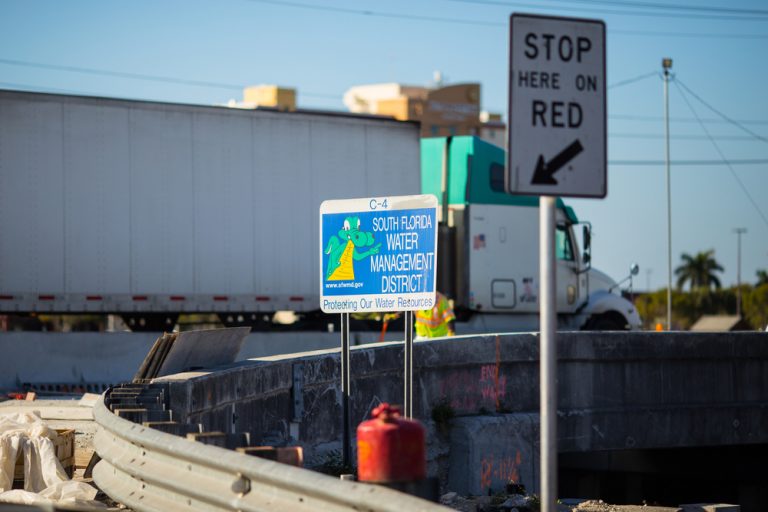At the beginning of August, Vice President Kamala Harris went to Miami to announce some $1 billion in funding from FEMA’s Building Resilient Infrastructure and Communities program to address extreme heat and flooding across the country exacerbated by climate change.

Of those funds, $50 million was allocated to go to the South Florida Water Management District (SFWMD), specifically for flood mitigation and pump station repairs. The award recommendation was about two and a half years in the making according to Carolina Maran, Ph.D., the district resiliency officer at SFWMD.
“We knew that we would be doing projects that filled the grant objectives … so we had been educating ourselves for the past two years on how we would build this proposal,” Maran said. “We grew internally as an agency just by putting this application together.”
SFWMD, which works alongside the Southeast Florida Climate Change Compact, serves a unique role in a unique region, an area that had to be drained in order to allow development. SFWMD was the agency created to manage the water system. But it’s not just about managing flooding; the SFWMD is also there to ensure the protection of water supply sources and also to restore ecological functions that were impacted by the development of the systems.
The proposal the agency built out focused on the C-8 basin, a region of over 270,000 people that covers 28 square miles. Working together with partners at the local level, like Miami-Dade County, this project allows the many, diverse neighborhoods inside the basin connected to the main canal to have better drainage by adopting the proposed measures, including but not limited to replacing the S-28 Coastal Structure – a reinforced concrete, gated spillway – to the sea, installing a forward pump station, and constructing a flood barrier.
“Enhancing the system as a whole and giving us capacity to have more flexibility by adding pumps in some locations is also a piece of what we’re doing. We cannot rely upon only gravity anymore.”
“This project is important because of climate change and sea level rise,” Maran explained. “The system is operated by gravity. We need to have the freshwater levels higher than the ocean levels for everything to function.”
The issue is that when the system was originally designed, it accounted for sea levels that were 6 inches lower than they are today. In some locations, that gap is even larger. This lack of conveyance capacity has brought about a lot of limitations because the water cannot be discharged by gravity as it used to.
“Enhancing the system as a whole and giving us capacity to have more flexibility by adding pumps in some locations is also a piece of what we’re doing,” Maran explained. “We cannot rely upon only gravity anymore.”
The other major consideration is that this is just one project in one basin. It’s an important step, but also just scratches the surface of the work that needs to be done. There are 23 other basins in similar condition and at similar risk to flooding due to infrastructure and sea level rise issues. But SFWMD has no intention of slowing down. After all, according to Maran the work is just getting started.
